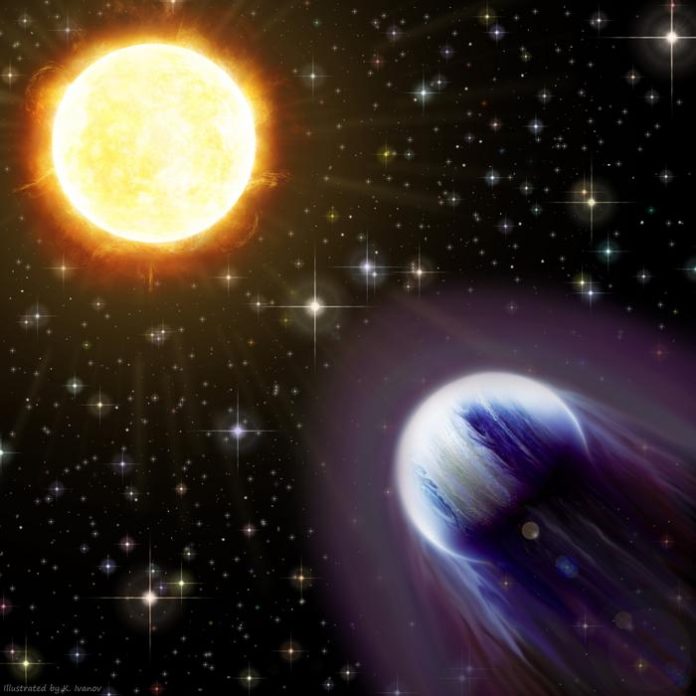A team of astronomers have identified a unique and puzzling planet known as WASP-193b that has a density similar to cotton candy.
Discovered by researchers from MIT and the University of Liège, WASP-193b is a giant, superlight, distant planet in the Milky Way.
The planet is larger than Jupiter in size (around 50%) but only has a tenth of its density, making it the second lightest planet among the 5,400 discovered to date, with the Neptune-like Kepler 51d being the lightest.
These enigmatic characteristics pose an array of challenges to our current understanding of planet formation.
Co-lead author Francisco Pozuelos, a senior researcher at the Institute of Astrophysics of Andalucia, explained: “We don’t know where to put this planet in all the formation theories we have right now because it’s an outlier of all of them.
“We cannot explain how this planet was formed based on classical evolution models. Looking more closely at its atmosphere will allow us to obtain an evolutionary path of this planet.”
The Wide Angle Search for Planets
The Wide Angle Search for Planets (WASP), an international collaboration of academic institutions, discovered WASP-193b using their two robotic observatories.
These observatories, located in the northern and southern hemispheres, use arrays of wide-angle cameras to measure the brightness of thousands of stars across the sky.
Between 2006 and 2008, and again from 2011 to 2012, the WASP-South observatory detected periodic transits, or dips in light, from WASP-193. This bright, sun-like star is located 1,232 light years from Earth.
The observed periodic dips in brightness indicated the presence of a planet orbiting the star every 6.25 days. The amount of light blocked during each transit suggested the planet was a giant, similar in size to a super Jupiter.
Estimating the mass of WASP-193b
To determine the planet’s mass, astronomers employed the radial velocity technique. This method involves analysing the star’s spectrum to detect shifts caused by the gravitational pull of an orbiting planet.
A more massive planet closer to its star causes greater shifts in the star’s spectrum, helping scientists estimate its mass.
Despite obtaining high-resolution spectra of WASP-193b from various ground-based telescopes, astronomers struggled to measure the planet’s mass.
The reason was that the planet was too light to exert a detectable gravitational pull on its star. This made it difficult to calculate its mass using radial velocity.
Ultimately, following multiple data analyses, the astronomers confirmed that the planet was extremely light – around 0.14 the mass of Jupiter.
Moreover, its density is around 0.059 grams per cubic centimetre, whereas Jupiter is 1.33 grams per cubic centimetre, and Earth is a more substantial 5.51 grams per cubic centimetre.
Future research
Researchers believe that WASP-193b is primarily composed of hydrogen and helium, similar to other gas giants in the galaxy.
However, WASP-193b’s atmosphere is likely far more inflated, extending tens of thousands of kilometres beyond Jupiter’s atmosphere.
The mechanism behind such an extensive and low-density atmosphere remains unexplained by current planetary formation theories.
To gain a deeper understanding of WASP-193b, the research team plans to use a technique developed by de Wit.
This method involves deriving key atmospheric properties, such as temperature, composition, and pressure at various depths. These properties will help accurately determine the planet’s mass.
WASP-193b is considered an excellent candidate for further study, particularly with advanced observatories like the James Webb Space Telescope.
By leveraging these powerful tools, researchers hope to uncover more details about this unusual, fluffy world.









